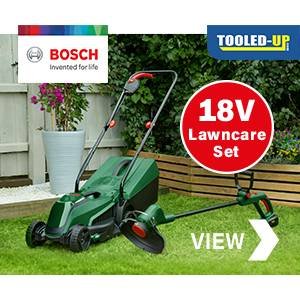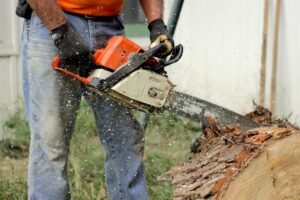Welcome to the ultimate guide on how to grow quinces in the UK! If you’ve ever tasted a quince and fallen in love with its unique flavor, you’ll be delighted to know that growing your own quinces is not only possible but also a rewarding experience. In this step-by-step guide, we will take you through everything you need to know to successfully grow and harvest your own quinces right in your backyard.
Why Should I Grow Quinces?
Quinces are a delightful fruit that is not commonly found in supermarkets. By growing your own quinces, you have access to a fresh and delicious fruit that is perfect for making jams, jellies, and desserts. Quinces are also rich in vitamins and minerals, making them a healthy addition to your diet.
Where is the Ideal Location to Grow Quinces?
Quinces thrive in full sun, so choose a location in your garden that receives at least six hours of direct sunlight each day. They also prefer a sheltered spot to protect them from strong winds, which can damage the branches and fruit.
Soil Type and Preparing the Soil
Quinces prefer well-draining soil that is slightly acidic. Before planting, prepare the soil by digging in plenty of organic matter, such as compost or well-rotted manure. This will improve the soil structure and provide essential nutrients for the growing quinces.
Watering Tips and Hints
Quinces require regular watering, especially during dry spells. Water deeply, ensuring the soil around the roots is thoroughly moistened. Avoid overwatering, as this can lead to root rot. Mulching around the base of the plant will help retain moisture and suppress weed growth.
Sowing and Planting Quinces
Quinces can be grown from seeds or purchased as young trees from nurseries. If you choose to grow from seeds, start them indoors in pots during late winter. Once the risk of frost has passed, transplant the seedlings into the garden.
How to Grow Quinces from Seed
To grow quinces from seed, soak the seeds in water for 24 hours before planting. Sow the seeds in pots filled with seed compost, ensuring they are covered with a thin layer of soil. Keep the pots in a warm and sunny spot, and water regularly.
How to Plant Out Quinces
When planting quinces, dig a hole that is slightly larger than the root ball. Place the tree in the hole, ensuring that the graft union is above the soil line. Backfill the hole with soil, firming it gently around the roots. Water thoroughly after planting.
General Care for Quinces
Quinces require minimal care once established. Prune them during the dormant season to remove dead or diseased wood and to shape the tree. Apply a balanced fertilizer in early spring to promote healthy growth. Regularly check for pests and diseases, and take appropriate measures to control them.
How to Harvest Quinces
Quinces are ready to be harvested when they turn yellow and have a fragrant aroma. Gently twist the fruit to detach it from the branch, or use a sharp pair of secateurs to cut the stem close to the fruit. Handle quinces with care, as they bruise easily.
How to Store Quinces
Quinces can be stored in a cool, dry place for up to a month. Place them in a single layer to prevent them from touching each other, as this can cause bruising. Alternatively, you can make quince preserves or freeze the fruit for later use.
Problems in Growing Quinces: Common Pests and Diseases
Quinces are generally resistant to pests and diseases. However, they can be susceptible to aphids, caterpillars, and fungal diseases such as powdery mildew. Regularly inspect your plants and take appropriate action if any issues arise.
Where to Buy Quinces
You can purchase quince trees from reputable nurseries or online garden centers. Look for varieties that are suitable for the UK climate, such as ‘Meech’s Prolific’ or ‘Vranja’.
What are the Best Quince Varieties to Grow and Why?
The best quince varieties to grow in the UK include ‘Meech’s Prolific’, which is known for its high yield and disease resistance, and ‘Vranja’, which produces large and flavorful fruit. Both varieties are well-suited to the UK climate and are highly recommended for home gardeners.
What Tools Will I Need to Grow Quinces?
To grow quinces, you’ll need a few basic gardening tools, including a spade or fork for digging, secateurs for pruning, and a watering can or hose for watering. Additionally, having a pair of gardening gloves and a wheelbarrow for transporting soil and compost will make the process easier.
Conclusion
Growing your own quinces can be a rewarding experience, allowing you to enjoy the unique flavor of this delicious fruit right from your garden. With the right location, soil preparation, and care, you can successfully grow quinces in the UK. So why not give it a try and embark on your quince-growing journey today?
Frequently Asked Questions
Q: How long does it take for a quince tree to bear fruit?
A: Quince trees typically start bearing fruit after 3 to 5 years.
Q: Can I grow quinces in containers?
A: Yes, quinces can be grown in containers, provided they have enough space and receive adequate sunlight.
Q: Can I eat quinces raw?
A: Quinces are usually too tart and astringent to be eaten raw. However, they can be enjoyed when cooked or used in recipes.
Q: Are quinces self-pollinating?
A: No, most quince varieties require cross-pollination with another compatible variety to produce fruit.
Keywords: how to grow quinces, growing quinces, grow your own quinces, growing quinces in the UK




































